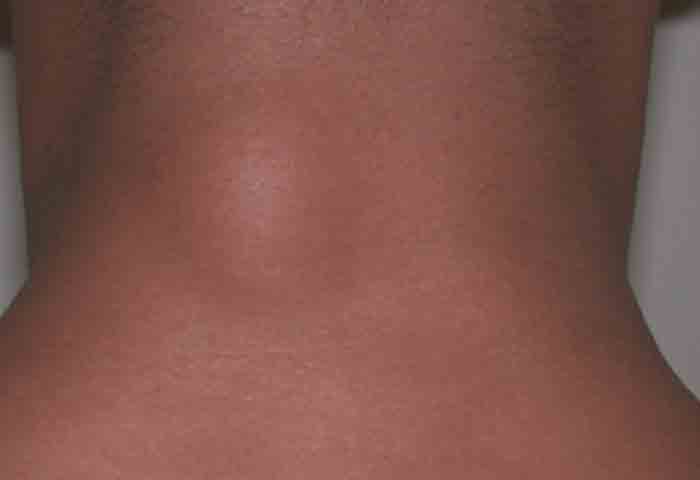
Important: This article is for informational purposes only. Please read our full disclaimer for more details.
You run your fingers behind the ear on the neck. Alarmed when your fingers ghost over what seems like a small lump? Before you imagine what it could be and whether it could kill you, you can always use a process of elimination to decide what kind of lump is lurking behind your ear.
There can be several conditions that can cause lump behind your ear to appear. Here are some of them.
Article Contains
Causes of Lump On the Back of Your Neck Behind Your Ear
1. Abscess
An abscess is a tender mass generally surrounded by a colored area from pink to deep red. Often easy to feel by touching, the middle of an abscess is full of pus and debris. These are caused when tissues or cells in a certain area of your body become infected. Abscesses are a common problem for most people since it’s is almost impossible to escape harmful bacteria. If the lump behind your ear is an abscess, you can soothe it by putting a warm compress on it, usually a cloth that has been dipped in hot water and wrung. The warm compress with bring the pus to the head of the abscess and help drain it faster.
2. Acne
Acne, the bane of teenagers all over the world and some of us adults too, can appear in places other than the face. Acne usually occurs when hair follicles become clogged and the follicle in question hardens and forms a lump. Do not touch the pimple or try to pop it on your own. Rather, a judicious application of benzoyl peroxide cream should help and will get rid of the pimple quickly.
3. Throat Infections
Yes. You read that right! Throat infections can cause lumps and bumps to appear in places around your neck and jaw and of course, behind your ear. A bacterial or a viral infection which affects your throat will cause the area in and around your throat to swell up. Depending on the kind of throat infection you are suffering from, you will have to take medication accordingly, preferably medicine prescribed by a certified physician.
[ Read: How to Use Honey for Sore Throat? ]
4. Lipoma
A lipoma is a soft fatty tumor. DO NOT FRET! Lipomas are not malignant. They are soft and moveable and usually painless. If the lump behind your ear is a lipoma, then you have nothing to worry about. However, if you feel weird about it or do not want it, you can always have it removed. The removal will be carried out by a cosmetic surgeon probably and is simple excision that is carried out under local anesthesia.
5. Swollen Lymph Nodes
Lymph nodes are tiny, organ-like structures that are present throughout the body. Usually, when lymph nodes swell, it is the result of an infection, or more worryingly, cancer. Swollen lymph nodes tend to be either hard, firm or tender. And they are best checked out by a doctor who will be able to offer you a better idea of what is wrong and what you need to do next.
6. Sebaceous Cysts
A sebaceous can either be a small sac of fluid and dead tissue that originates either from the skin or a hair follicle. Sebaceous cysts tend to be small and nothing needs to be done about them. However, if they grow or become painful, or even worse, become infected, they will need to be looked at and surgically excised. If the cyst becomes infected, doctors will also recommend a course of antibiotics, either before or after the excision so that the cyst can be completely drained.
7. Mastoiditis
Ear infections are another common cause of lumps behind the ear. If you have not gotten treatment for an ear infection, then you run the risk of developing a more serious ear infection called mastoiditis where an infection develops in the bony protrusion behind the ear, which is called the mastoid.
Address the lump appearing at the back of your neck, as soon as you discover the lump. Visit your doctor so that he or she can accurately gauge what is causing the lump and prescribe the right treatment for it. Though all lumps are not dangerous, it is always better to be safe rather than sorry.
Image Credit: 1
You Might Also Like:
- How to Clean Ears With Hydrogen Peroxide
- Top 10 Simple Home Remedies for a Tooth Abscess
- How to Cure An Ear Infection With Garllic?















